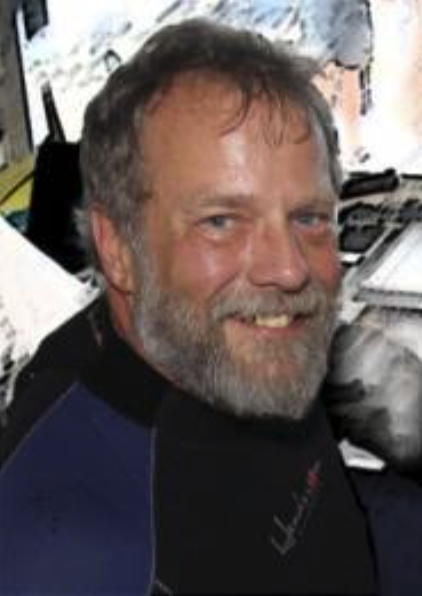James J. Sinclair, MA, is a marine archaeologist and ocean explorer who started his career in 1981 working with the famous shipwreck hunter Mel Fisher in his quest for the Nuestra Señora de Atocha and the Santa Margarita, 1622, as well as the 1715 Plate Fleet. As co-director of archaeology and of the laboratories charged with the conservation of these magnificent finds, Mr. Sinclair oversaw the conservation of over half a million archaeological objects and helped in developing techniques currently used in many laboratories around the world today.
Sinclair has been the chief archaeologist on projects that range from searching for a legendary shipwreck in Indonesia, the Portuguese Shipwreck the Flor de la Mar, 1511. To submersible diving 16,300 feet on an unknown shipwreck, which became known as the “Coconut Wreck” in the U.S. territory of Guam, where recoveries were made on the shipwreck of the lost Manila Galleon Nuestra Señora del Pilar, 1691, and throughout the Caribbean. Jim has worked on the Dutch protectorate island of St. Eustatius,
investigating part of a sunken city and wharf complex associated with colonial trade at this, the earliest “Freeport” in the New World. He has also conducted investigations on the islands of Barbuda and Anguilla.
Sinclair has also overseen investigations on the San Miguel de Archangel, 1654 off Jupiter, Florida, and on the suspected “Viscyana”: A Columbus period wreck off Nombre de Dios in Panama, a very early ship of exploration.
In the year 2000, Mr. Sinclair became the first professional archaeologist to visit the wreck site of the RMS Titanic, 1912, utilizing the MIR submersible. Sinclair performed the first archaeological survey of the stern artifact scatter (debris field).
In 2001 Sinclair was the lead archaeologist on a historic period shipwreck that was discovered in 16,300 feet of water in the Blake Basin in the Mid-Atlantic, to date the deepest archaeological recovery of historic period shipwreck treasures known as the Coconut wreck circa 1810 and presented his findings to the Deep Water Archaeology Symposium at Massachusetts Institute of Technology (MIT) the following year.
In 2009-2011, Sinclair directed a project in Wales, UK, investigating the possible remains of a privateer vessel, the Black Prince, commissioned by Ben Franklin during the American Revolutionary War, and was broadcast by National Geographic Explorer as “Ben Franklin’s Pirate Fleet.”
Jim has worked in Canada on the wrecks of Le Chameau, 1725, carrying pay role and the new French Governor to Ottawa, and that of the HMS Fantome, 1814, lost off Prospect, Nova Scotia, thought to be carrying plunder from the sacking of Washington, DC during the War of 1812.
In 2011, Sinclair investigated the wreck of the RMS Lusitania, 1915, in conjunction with Odyssey Marine Exploration and the Discovery Channel in the television series Treasure Quest. He then turned to Panama and began investigations on shipwrecks there. One site was believed to be that of the Vicyana, 1504, a ship lost by Columbus. Searched for Sir Francis Drake’s coffin and the San Jose 1631. He also discovered and investigated what is believed to be the remains of two ships that were intentionally scuttled in the last expedition of the famed English Privateer Sir Francis Drake. Another Shipwreck that Jim worked on in
Panama is the lost Almirante of the South Seas Armada of 1631 – the San Jose, 1631, which was carrying a king’s ransom in Silver. This site was worked in conjunction with the Republic of Panama, has produced an enormous treasure, and is now in legal limbo with changes in the Panamanian Government.
In 2013, Jim was once again an archaeologist working with Odyssey Marine Exploration on the wreck of the Central America, 1857, which was carrying gold from the San Francisco Mints and from the gold fields of California after the 1849 Gold Rush.
Jim has been featured on National Geographic, History Channel, and has been on several of the Discovery Channel’s Expedition Unknown, hosted by Josh Gates, and the series Cooper Treasure programs. Currently, he is the project archaeologist for the History Channel/Fortis Entertainment production of Death Coast (release date of April 1, 2025), featuring investigations into shipwrecks along the coast of Cape Breton, Nova Scotia.
From 2018 – present, Sinclair is the director of Archaeology for Allen Exploration, working in a private/public partnership with the Government of the Bahamas to recover at-risk underwater cultural heritage, including the historic treasures of the Nuestra Señora de las Maravillas, 1656.
Sinclair has assisted in the development of the Bahamas Maritime Museum, Port Lucaya, Grand Bahama, and in setting up the laboratory at the museum for the cleaning, curation, and documentation of all objects recovered.
Jim was elected to the prestigious Explorers Club in 1986 for his contributions to the field of underwater archaeology and ocean exploration.
